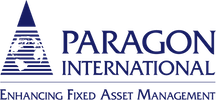Many organizations rely on their fixed assets as the lifeblood of the company. All too often, they don’t pay much attention to their fixed assets and lack the resources to track those assets and maintain an accurate inventory. Fixed asset inventory tracking is often seen as unnecessary. And it’s costing them.
Throwing Money Out the Window
When it comes to the fixed asset inventory of your organization, what you don’t know could cost significant money, reduce efficiencies, and could even cause your organization to cease operation.
All too often performing physical fixed asset inventories is overlooked in an organization. Facility managers, department heads and fixed asset accountants often cite that it’s difficult to find the time and tools to devote enough attention to fixed assets. They lack procedures for getting accurate baseline inventories and updated reconciliations. Yet they don’t stop to think how much they are paying in insurance or property taxes on the assets the organization does or does not have, and are ill prepared in the event of a disaster.
Fixed asset inventory tracking is one of those processes that often gets delayed or forgotten. Yet assets such as buildings, machinery, computers and other electronic equipment, vehicles, office furniture, and manufacturing equipment are some of the largest investments most companies make. For 80% of Fortune 500 firms, fixed assets represent the largest line item on their balance sheet.
Why a Fixed Asset Inventory Tracking Strategy is Important
A fixed asset inventory strategy is vital for organizations for many reasons. A proper and accurate accounting of assets can save time and money, reduce theft, improve planning and budgeting, eliminate ghost and zombie assets, and help an organization recover after a natural disaster.
To run a profitable business, management must have information regarding the current location, use, state of repair, and usefulness of its productive assets. The CFO has a fiduciary duty to ensure accurate systems are in place to provide this information. Organizations with a dedicated fixed asset inventory tracking strategy report fixed asset inventory accuracy levels that exceed 95%.
Many organizations are unsure of how or where to start in this process, and the challenge can be daunting. Establishing the highest standards of inventory accuracy and best practices in fixed asset management will pay off in savings and efficiency.
The best and easiest way an organization can accomplish this is to implement a best practices fixed asset inventory strategy. By implementing a fixed asset inventory process that includes documenting, labeling, a fixed asset tracking software solution, and continual tracking, organizations can reduce the time it takes to evaluate the assets on hand — reducing costs and helping to achieve profitability.
By properly tracking fixed assets and performing regular fixed asset inventories, organizations can minimize ghost and zombie assets, reduce the hassles of performing audits, and save money. Use our handy calculator to see how much you could save.
Watch this short video and Learn 3 Key Things About Fixed Asset Tracking
Close the Window and Stop Throwing Away Money
Improper tracking of fixed assets can lead to under- and over- payment of taxes and property insurance, and myriad issues that can bring about compliance challenges and financial inaccuracies. An integrated fixed asset depreciation and tracking system like Sage Fixed Assets can help.
Are you tired of throwing money out the window? Contact us today and keep the cash in your business where it belongs!
(Source: Sage, Aberdeen)




